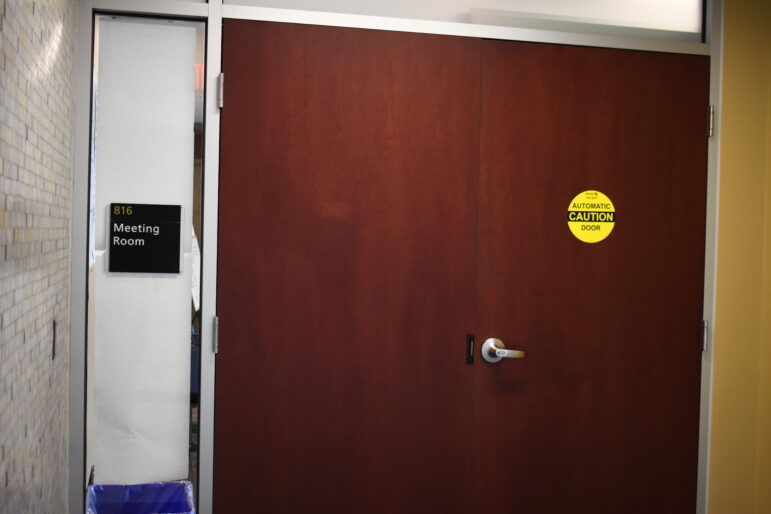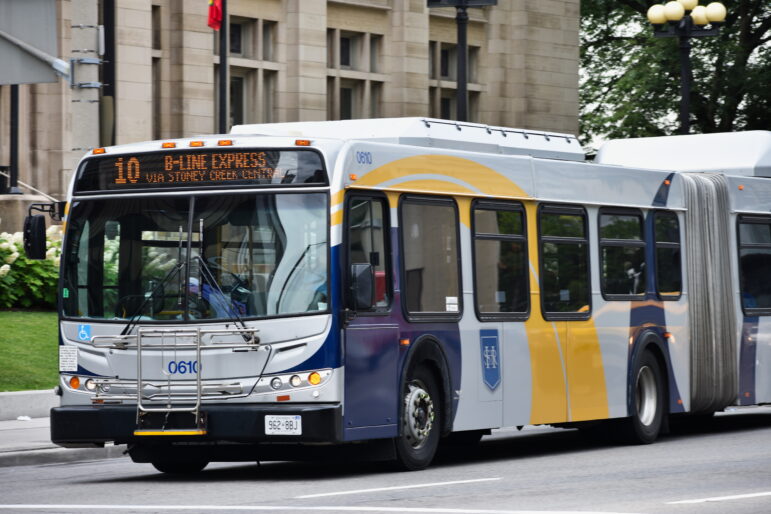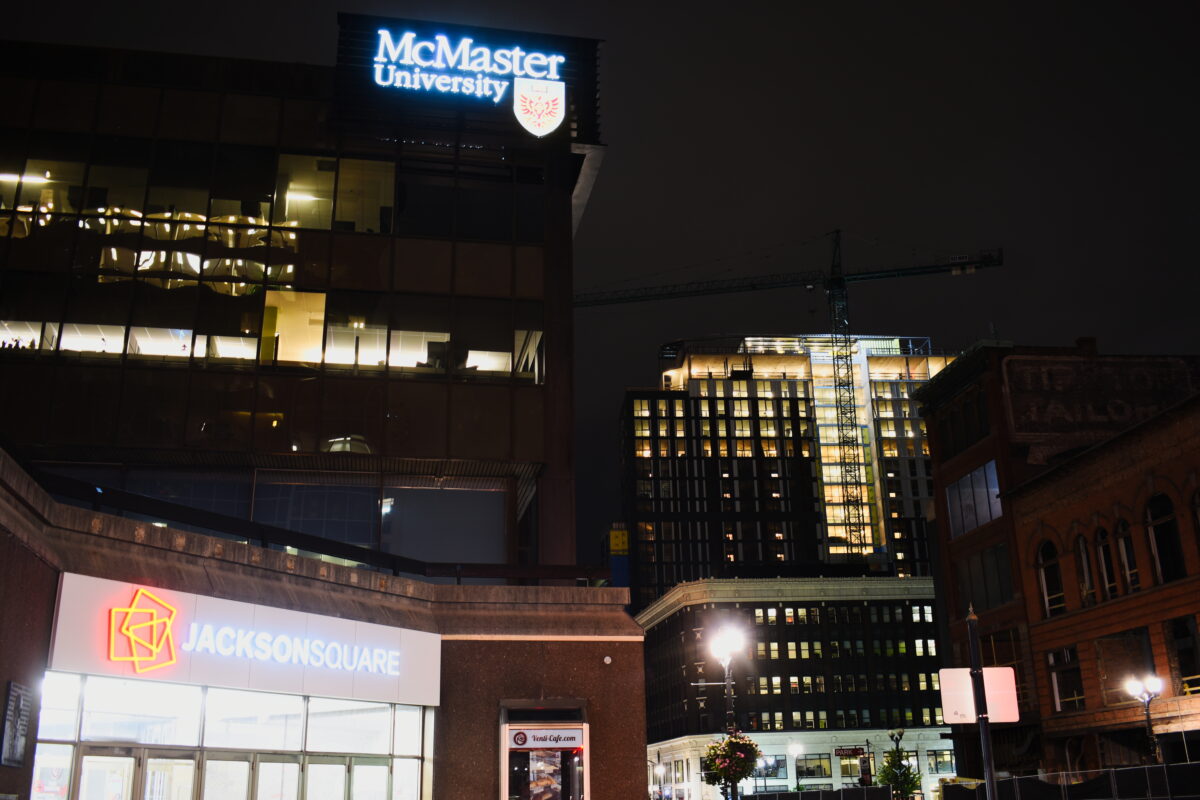The eighth floor of Hamilton City Hall is now HAmazon with over a dozen high ranking City staff assigned to the City’s top priority – bidding on the competition to be the local municipality and provincial/state jurisdiction most willing to give Amazon handouts for what they saw will be a new $5-billion dollar “headquarters” campus.
Amazon says its plans to grow over 20 years to 50,000 employees at the campus.
Two weeks ago, Amazon posted the competition criteria to their website. To ensure governments get caught up in jobs-hysteria and don’t practice much due diligence, Amazon expects corporate welfare offers by October 19, 2017.
The media launched a flurry of stories, and free marketing for Amazon – a company which likely already has a short-list of candidates, and is using this “competition” to extract concessions from them.
Politically, for mayors such as Hamilton’s Fred Eisenberger, when the local media calls up asking if Hamilton’s prepared to give Amazon handouts, the answer is Yes!
It’s not corporate welfare, it’s a “courtship” or “wooing” as Hamilton’s two written word media outlets framed it.
We’re not “courting” Amazon, we’re being used.
For Hamilton, the Amazon bid is an exercise in expensive political showmanship, the Mayor has senior staff do busywork, hire a few consultants, and postures about “fighting” for Hamilton.
Meanwhile, the day to day glamourless work of actually governing the City goes undone in favour of Operation HAmazon.

50,000 Jobs over 20 Years – Would Fixing City Hall Red Tape Be More Productive?
Could Hamilton attract 50,000 jobs over the next 20 years by making it easier to do business in Hamilton? Could our City attract 50,000 new IT professionals and jobs by 2037 by reversing our brain drain to Waterloo and Toronto?
Small businesses and start-ups generate local wealth and spend it in our community. They are not constantly looking for corporate welfare – they are looking for great places to do business.
Imagine if the City took all the staff and money they are placing into the HAmazon project and focused them on making Hamilton attractive to start-ups, and ending our brain drain?
What About Making Hamilton Attractive for all Businesses?
There is frustration among Hamilton’s small business community about the City’s ability to drop everything to buy and roll-out a red carpet for Amazon.
Numerous restaurant owners have shared with me stories of bureaucratic bumbling and red-tape that nearly drop them to bankruptcy as the City takes months to process applications, schedule inspections and issue permits.
The stories are many and share many similarities.
None of these owners would go on-the-record for fear of retaliation from City Hall.
Confidence in the City’s processes is so low, and delays so common, many businesses start renovations and builds prior to permits being issued.
The City issues an Order to Comply, and businesses ignore them. It’s become so common, this journalist can no longer reliably use Orders to Comply as a signal of an problem. Non-compliance is the only means for business survival.
Critical Look at Amazon’s Scheme
Richard Shearer, Senior Research Associate & Senior Project Manager – Metropolitan Policy Program at the Brookings Institute wrote an excellent assessment of Amazon’s play for corporate welfare:
As is often the case with corporate expansions and relocations like this one, there’s a very good chance Amazon already knows exactly where it would like to open its second headquarters, which would mean its request for proposals is a way of inviting the place it has already chosen to foot the bill for Amazon’s new digs.
…
Inverting to Canada would send a strong message about the company’s attitudes about the U.S. political environment right now. But, again, Amazon does not think short term. Moving to Canada would send the wrong message at the wrong time. It would invite a costly and ongoing rebuke from President Trump and his supporters. It would also play into President Trump’s arguments about U.S. corporate tax policy—a debate Amazon probably wants to avoid. And if the president’s tax reform proposals do become law, the move to Canada could prove shortsighted.

Hamilton Does Not Fit Amazon’s Criteria
Particularly relevant to Hamilton is the assessment that Amazon has much to lose in political capital by moving to Canada, and the international transportation infrastructure Amazon is seeking.
On transportation and logistics, Amazon is building an administrative campus, not a fulfillment centre. They want to be within 45 minutes of an international airport with daily direct flights to Seattle, New York, the San Francisco Bay area, and Washington DC; and for this airport to be connected by higher-order public transit.
Hamilton International Airport is to the definition of airports what the Rockton World’s Fair is to world fairs – sure its in the name, and we love to boost about them, but neither register on a global scale.
For all the talk of Hamilton’s port as a unique advantage in our bid, nobody is riding ships for travel, and even if Amazon were building a fulfillment centre, they are not using cargo ships to deliver consumer goods.
Amazon is looking for a metro area with a population of over one million, Hamilton’s CMA population in 2016 was 747,545.
The New York Times does a great job of showing how Amazon’s criteria applies to major US population centres, and narrows the candidates to a handful of metros. This story is a great read: Dear Amazon, We Picked Your New Headquarters for You.
Let’s use Amazon’s Benchmark’s as a Guide to Compete with Kitchener-Waterloo
Hamilton’s growing due to spillover from Toronto’s growth, but we’re not growing like Kitchener-Waterloo – and we’re losing influence nationally to KW.
Amazon’s criteria (excluding corporate welfare) provide us with benchmarks to focus on in the coming years to position Hamilton as a great place to locate a business.
Amazon wants a skilled labour force; one of their requests beyond post-secondary education data is information on computer science programs in our K-12 schools – companies are looking beyond Mohawk and McMaster to see if Hamilton is preparing for the future; let’s make sure they see we are.
This week, we learned that our Grade 6 youth are not meeting EQAO standards for math, what are we doing about this beyond thinking of it as just a school board issue?
Is it time for Council to fund math tutoring in public libraries? Let’s have that discussion, and ask questions like would the hundreds of thousands being spent on Operation HAmazon produce more future jobs if we used the funds to improve our children’s math literacy?

Amazon wants to locate alongside higher order transit, Hamilton’s failing to provide reliable lower order bus transit, and Council still hasn’t fully committed to LRT.
How many companies are locating in Kitchener – Waterloo instead of Hamilton because KW built higher order transit while our Council was instead building our last Big Thing – the stadium?
Building Hamilton’s Corporate Strength
Amazon wants to locate where there is a cluster of other large headquarters and seeks testimonials from those large companies. We no longer have large corporate headquarters in Hamilton. We cannot offer testimonials to Amazon.
This brings us back to the restaurant owners – are they giving word-of-mouth testimonials to others in their industry in private conversations? What is City Hall doing to change and create opportunities for existing businesses to deliver unprompted testimonials about how great it is to do business in Hamilton?
Hamilton’s days as the industrial powerhouse of Ontario was as a branch plant city – we housed the Canadian operations of American powerhouses. Today, American powerhouses are in information technology and information systems. They are locating their branches in KW and Toronto.
Despite heroic efforts by Hamilton’s IT & IS community to build our local ecosystem to attract others in the sector to Hamilton; City Hall failed to create and execute an effective comprehensive strategy for competing against Toronto and KW in the IT sector.
We’ll attract the Amazon’s of the world once we’re attracting the medium size firms of the information economy.

One BIG Thing Syndrome
Hamilton City Hall is inflicted with “One Big Thing Syndrome”, it’s always one thing that is going to cure the post-industrial state Hamilton is afflicted.
The one big thing is all that City Hall focuses on; it’s always going to be the big win, Hamilton is going to win no matter the odds, and daring to challenge the Syndrome results in one’s love of Hamilton being called into question – hence there’s little civic discussion of the merits of continuing to chase One Big Win.
One Big Win never works. There’s no small irony in noting that Council sold off our 600 kilometre City-owned fibre optic network in 2008 and dismantled our downtown WiFi network during its last One Big Win project – the stadium.
The problem is that while staring at the Sun, City Council becomes blinded to the road ahead of them.
Even if the HAmazon One Big Win project wins, as David Zipper writes at City Lab, “It’s rosy at best to presume that the next 20 years will be as kind to Amazon as the last 20. Local taxpayers shouldn’t bear the risk of the corporation’s financial future.”
The City Manager has assign City Hall’s most talented staff to HAmazon. City Council handed a blank cheque to work on the bid; with approval of millions in corporate welfare likely to follow.
Let’s put those talents, and the blank cheque to work on this bid into the only guarantee of job creation – creating an environment for small and locally owned medium businesses to succeed.
2,500 more new jobs a year created by local businesses is achievable, and as a bonus, not only will the growth of small business result in more tax revenue, small business won’t be asking for a new round of corporate welfare in 20 years, in fact, they won’t demand corporate welfare in the first place.
Instead of always looking for One Big Thing to cure all, City Council needs to start working on creating the conditions for hundreds of local wins that cumulatively add up to more than the One Big Thing.
2,500 new jobs a year isn’t particularly ambitious, and it doesn’t make for big headlines.
It is possible, now let’s get to work.

